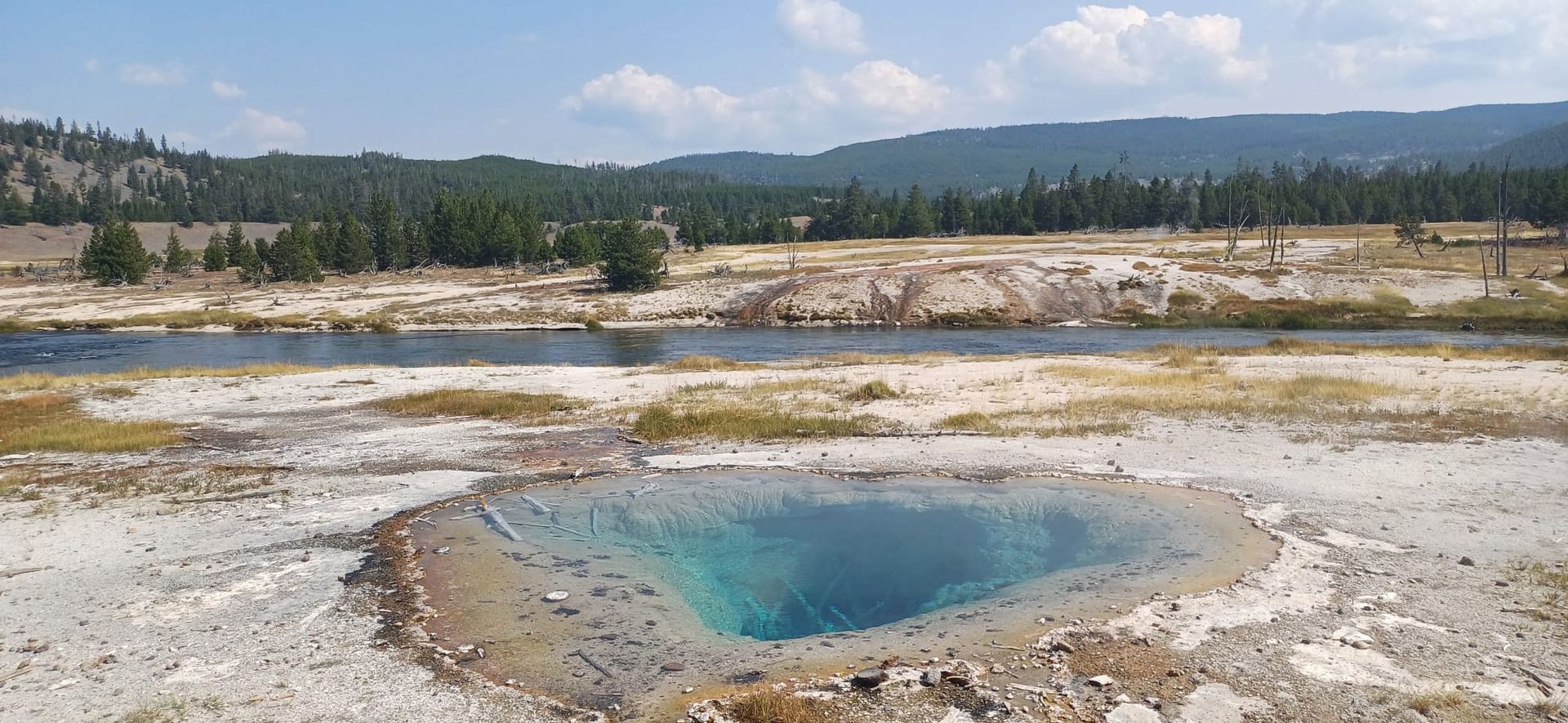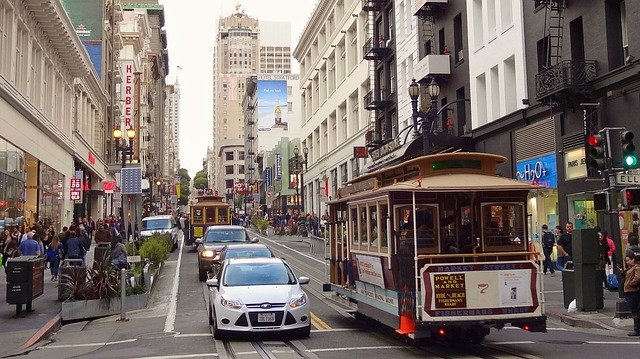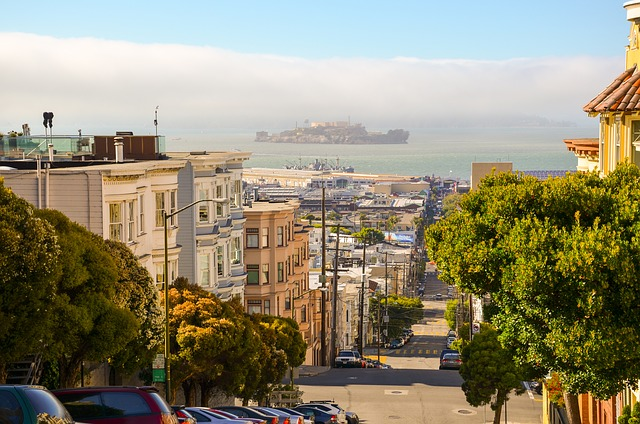A Denver to Yellowstone National Park road trip takes you from America’s highest city to its oldest national park.
A 570-mile Denver to Yellowstone National Park road trip takes you from northeast Colorado the whole way across Wyoming. Along the way, you will get to explore all of the best sights and sounds that “The Cowboy State” has to offer, including some of the most stunning mountains and historical sites in the United States. This is before delivering you to one of the most beautiful natural locations on the planet.
Read on to find out all there is to do and see along the way, to ensure you can plan the perfect itinerary for your trip.
A Denver To Yellowstone National Park Road Trip: How Far Is It, How Long Will It Take To Get There & What Is The Best Route?
A Denver to Yellowstone National Park road trip covers at least 510 miles (820 kilometres) and takes a minimum of 8 and ¼ hours to drive. However, we feel the best route for a Denver to Yellowstone National Park road trip is slightly longer, at 570 miles (917 kilometres) and 9 and ¼ hours driving time.
The best route will see you set off north on I-25, which you will follow to Cheyenne, Wyoming, before going west on I-80. When you reach Laramie, Wyoming, go north on US Route 30 and follow it to the town of Medicine Bow. You will then keep going north, only this time on Wyoming Highway 487, which you will remain on for its entire 73-mile (117-kilometre) duration. At its conclusion, turn right onto Wyoming Highway 220, and again follow this for its entire 73-mile (117-kilometre) duration.
Here you will head west on US Route 26, which will take you to the town of Shoshoni, where you will exit onto US Route 20 to begin going north again. When you reach the town of Thermopolis, join Wyoming Highway 120 where it begins to head northwest, and remain on it for 84 miles (135 kilometres), until you reach Cody, Wyoming. You then simply join US Route 14 and follow it west the rest of the way to Yellowstone National Park.
Best Time For A Denver To Yellowstone National Park Road Trip
The best time for a Denver to Yellowstone National Park road trip is between June and August. This period features the warmest temperatures, both along your route and at your destination, allowing you to enjoy your trip without constantly worrying about trying to stay warm.
It also avoids the risk of any roads or parts of the park being closed off, both of which are very likely due to the harsh weather and remote location of this part of the country. It also means all of the attractions along the way should be open and available for you to enjoy.
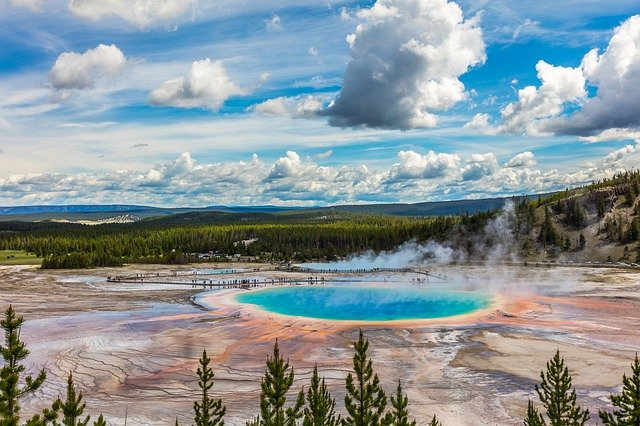
Best Place To Stop On A Denver To Yellowstone National Park Road Trip – Casper, Wyoming
With a Denver to Yellowstone National Park road trip taking over 9 hours to drive, most people will want to split it up, especially if they want to fully enjoy everything that the route has to offer. The best place to stop on a Denver to Yellowstone National Park road trip is Casper, Wyoming. Not only is it conveniently located at roughly the halfway point of your journey, but it also has an incredible amount to offer.
Casper is the largest and second most populous city in the state of Wyoming. Named after Casper Mountain, which it sits at the foot of, it is nicknamed The Oil City, due to its long-running history with the oil industry. Like many other towns and cities in Wyoming, it is also synonymous with cowboy culture.
The city was founded in 1887 after the fall of Fort Caspar, which was located just a short way to the west of where the city stands today. That site now features the Fort Caspar Museum, with artefacts, exhibits, guided tours, and recreated buildings showing and explaining how the fort would have looked in the early to mid-1860s.
This sort of history is common throughout Casper, with numerous museums offering exhibits on the history, art, and wildlife of the region, such as the National Historic Trails Interpretative Center. With permanent displays on the Oregon, Pony Express, California, and Pioneer Mormon Trails, all of which ran through Casper, as well as temporary exhibits on some lesser-known trails, it is the ideal location to learn about the growth of the United States as it expanded west in the 1800s.
A destination brimming with a greater range of amenities and home luxuries than you will find anywhere else in the state, Casper is the perfect place to stop to combine relaxation and historical enrichment.
Best Hotel To Stay At In Casper, Wyoming – Residence Inn By Marriott Casper
The Residence Inn By Marriott Casper is a beautiful, conveniently situated property that offers all the luxury and convenience you would expect from such a reputable chain. A modern, all-suite hotel, it boasts a selection of studios and one and two-bedroom suites, all of which are spacious, stylishly decorated, and feature comfortable furnishings, full kitchens, workspaces, separate living and sleeping areas, Wi-Fi, air conditioning, a 40” smart TV, and stunning mountain views.
The communal areas then offer a lounge, garden, patio, tennis court, spa, indoor pool, hot tub, wellness, business, laundry, and fitness centres, BBQ facilities, and a 24-hour front desk and grocery delivery service. This ensures your every need is taken care of, as does a complimentary hot breakfast that is served each morning.

Top Attractions On A Denver To Yellowstone National Park Road Trip
A Denver to Yellowstone National Park road trip takes you past many incredible sights and attractions. While some of these locations may require a slight detour from your route, none are that far out of the way. I would highly recommend you make the most of the time you have and see as many of these as possible throughout your journey.
Fort Collins, Colorado
Fort Collins, Colorado, is a lively, picturesque town with a rich history located in the foothills of the Rocky Mountains. Its heart is its Old Town, which is a beautifully preserved district with Romanesque Revival and Victorian buildings that inspired Disneyland’s Main Street USA. The stunning Old Town Square is the meeting point of countless lit alleys filled with boutiques, galleries, and more than 130 eateries and pubs, as well as attractions like the Fort Collins Museum of Discovery and numerous public art installations and murals.
While the state of Colorado is one of the largest beer producers in the United States, Fort Collins is considered its craft beer capital, as its more than 20 craft breweries produce around 70% of the state’s microbrews. Many of these are located within walking distance from downtown and offer tours, while events like Colorado Brewers Festival and New Belgium’s Tour de Fat offer additional, fun-filled ways for beer lovers to sample the local brews.
Outdoor lovers will be thrilled with the hiking and biking trails in Horsetooth Reservoir, Lory State Park, and the trail to Arthur’s Rock, while even more adventurous visitors can engage in kayaking and rafting on the Cache la Poudre River. Free bike rentals in town also mean you can stay active in a more urbanised setting if you prefer.
Other popular attractions in the town include the Lincoln Center, which hosts Broadway shows, symphony performances, comedy, dance, and local theater productions, the Fort Collins Museum of Art, community events like First Friday Art Walks, Old Firehouse Books, evening shows or live music at venues like Ace Gillett’s or Mishawaka Amphitheatre, The Gardens on Spring Creek, an 18‑acre botanical garden featuring themed displays, a butterfly house, and scenic lawns, and Twin Silo Park, with its playgrounds, zip lines, and slides.
Cheyenne, Wyoming
Cheyenne, Wyoming, is the largest city in Wyoming, as well as the state capital, and a destination famous for its Western and rodeo history.
It is best known for Cheyenne Frontier Days, the “World’s Largest Outdoor Rodeo and Western Celebration”. Held for 10 days every July since 1897, attractions like professional rodeo events, parades, carnival rides, concerts, and a cattle drive through Downtown Cheyenne make it an ideal event for Western enthusiasts to attend. If you can’t make it in July, though, the Frontier Days Old West Museum is open year-round and features displays, cowboy artifacts, and immersive exhibits showcasing frontier life.
Established as a major hub on the Union Pacific Railroad, the Cheyenne Depot Museum can be found in the historic, 1880s Richardsonian Romanesque train station and details Cheyenne’s early history with an array of exhibits on the railroad’s role in settling the West. It also hosts various fun-filled events throughout the summer. The nearby Wyoming State Capitol, which was built in a similar period and is listed as a National Historic Landmark, then offers tours that detail the city’s history in greater depth, while allowing you to enjoy the majesty of its architecture and 146-foot dome.
Downtown Cheyenne is filled with “Big Boots,” giant painted sculptures that are fun for photos and tell a story through an audio tour. The Cheyenne Street Railway Trolley Tour offers a narrated journey through historic Downtown Cheyenne. If history isn’t your thing, don’t worry, as there is plenty more on offer in Cheyenne. Cheyenne Botanic Gardens features solar-powered greenhouses, themed gardens, and the imaginative Paul Smith Children’s Village, while Holliday Park offers pleasant views and the humongous Big Boy steam locomotive, which is one of only eight of its kind left in the United States.
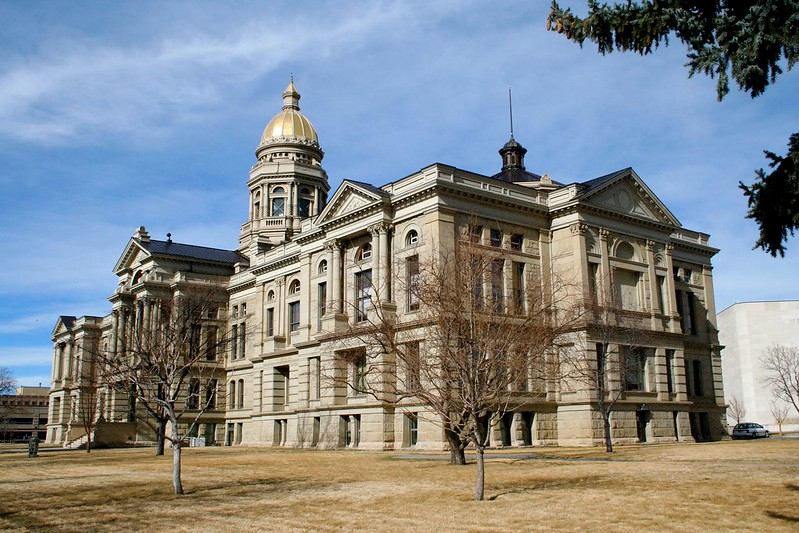
Laramie, Wyoming
Laramie, Wyoming, was established in 1868 as a Union Pacific Railroad settlement 7,100 feet up in the Medicine Bow Mountains. It is best known today for its deep Western heritage and being the location of the University of Wyoming.
Downtown Laramie is the city’s thriving hub. The Laramie Mural Project combines modern art with history as vibrant works are presented across historic facades, while architecturally rich buildings recall the town’s railroad and outlaw past.
Notable attractions in Laramie include Wyoming Territorial Prison, where Butch Cassidy once served time, Ivinson Mansion, which now serves as the Laramie Plains Museum, the Wyoming House for Historic Women, which honors suffrage pioneer Louisa Swain, and the iconic Union Pacific footbridge, which offers amazing sunset views and rail nostalgia.
At the University of Wyoming, you can explore the UW Geological Museum and its collection of dinosaur fossils, the Art Museum, the Botanical Williams Conservatory, and the Anthropology Museum, most of which offer free entry. In the summer, you will also find various concerts in the parks and several fabulous markets to enjoy.
Medicine Bow-Routt National Forest
Medicine Bow-Routt National Forest spans almost 2.2 million acres and features a blend of alpine meadows, dense pine and aspen forests, rugged mountains, and crystal-clear lakes that visitors enjoy year-round for everything from hiking, mountain biking, fishing, and horseback riding to skiing.
Vedauwoo Recreation Area features dramatic granite rock formations that are perfect for climbing, hiking, wildlife‑watching, photography, and stargazing, while the stunning Snowy Range Scenic Byway passes alpine wildflower meadows, glacier lakes, and the 12,000‑ft Medicine Bow Peak, which is a great stop for hikes in the summer and skiing at Snowy Range Ski Area in the winter. Steamboat Springs is another great resort for skiing enthusiasts too.
The photogenic alpine lake near the summit of the Snowy Range, Lake Marie, is a great place for wildlife sightings, with animals like moose, elk, mule deer, and even black bears common in the area. Mirror Lake is a great spot for picnicking and fishing while enjoying stunning views and a little serenity. This serenity can then be enhanced in the forest’s wilderness areas like Mount Zirkel Wilderness and Savage Run Wilderness, where an even deeper degree of solitude and pristine nature can be enjoyed by more intrepid explorers.
Wind River Reservation
Wind River Reservation is Wyoming’s largest Native American reservation and the seventh largest in the U.S. at more than 2.2 million acres. Its sweeping plains, rugged mountains, and winding rivers are home to the Eastern Shoshone and Northern Arapaho tribes and offer a window into Indigenous culture and history, as well as natural beauty.
The reservation includes parts of the majestic Wind River Range it is named after, and provides an opportunity to explore cultural sites, attend powwows, or learn about notable figures like Chief Washakie, whose gravesite is located near Fort Washakie.
The Wind River Wild Horse Sanctuary offers guided tours and the opportunity to view wild mustangs and learn about the role of horses in Native traditions. The Northern Arapaho Experience Room and the Shoshone Tribal Cultural Center boast historical exhibits and artifacts. Seasonal powwows like the Ethete Celebration and Northern Arapaho Powwow feature colorful regalia, dancing, and traditional music that is synonymous with Native culture.
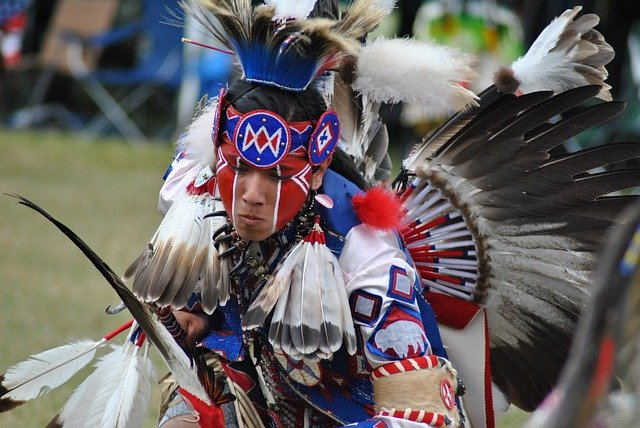
Legend Rock State Petroglyph Site
Legend Rock State Petroglyph Site is an open-air gallery of prehistoric rock art nestled along the sandstone cliffs of Cottonwood Creek, near the Bighorn Basin. Covering nearly a quarter-mile (400 m) along near-vertical rock walls, it features more than 92 carved panels and boasts around 300 petroglyph figures carved by the Shoshone people over a period of 10,000 years, including abstract anthropomorphic shapes, elk, bighorn sheep, buffalo, deer, horses, birds, and other wildlife.
Designated a Wyoming State Historic Site and added to the National Register of Historic Places in 1973, Legend Rock State Petroglyph Site is one of the best and most protected petroglyph sites in the U.S. There is also a visitor center, interpretive trails, picnic shelter, and restrooms. Open year-round from sunrise to sunset, an easy, marked trail follows the rock face with numbered glyphs matched to descriptions in brochures, so everyone will understand and enjoy exactly what they are seeing.
Shoshone National Forest
Shoshone National Forest in northwest Wyoming is America’s oldest national forest, having been established in 1891. Covering over 2.4 million acres, it features dramatic landscapes that include alpine peaks, glacier-carved valleys, dense forests, rivers, and meadows. A part of the Greater Yellowstone Ecosystem, it shares the diverse wildlife the National Park is known for, including grizzly bears, wolves, elk, bighorn sheep, and moose.
Its more than 1,300 miles of trails offer plenty of opportunities for hiking, backpacking, horseback riding, and fishing, while scenic byways like the Chief Joseph Highway and Beartooth Highway boast stunning views and enable those less able to hike to enjoy the forest.
Some of the most popular areas in the forest include the Wind River Range and its towering granite peaks and alpine lakes, the Absaroka Mountains and its rugged wilderness and diverse wildlife, and the Clarks Fork Wild and Scenic River, which is ideal for rafting and photography. In winter, Shoshone is also a fantastic place for cross-country skiing and snowmobiling. Campers then have dozens of scenic campgrounds and backcountry camping opportunities to choose from.
Cody, Wyoming
Named after its founder, famed frontiersman Colonel William Frederick “Buffalo Bill” Cody, Cody was established in 1896. Despite having fewer than 10,000 residents, Cody still ranks as the joint 10th most populated city in Wyoming, which goes to show just how sparsely populated the state truly is. It is known as the “Rodeo Capital Of The World”, as throughout the summer the Cody Night Rodeo takes place every night, while the largest rodeo in America, the Cody Stampede Rodeo, occurs over the 4th of July weekend.
You also have the Buffalo Bill Center Of The West museum complex to explore. Considered the most comprehensive museum complex dedicated to the Old West, as well as being listed among America’s most remarkable museums, it is a fabulous place to soak up the history of the region on your own wild west adventure. Boasting countless exhibits and artefacts, the complex is made up of 5 museums, which include the Buffalo Bill Museum, Cody Firearms Museum, Plains Indians Museum, Whitney Western Art Museum, and Draper Natural History Museum.
Other attractions in Cody include the Old Town Trail, a recreation of parts of the town as they would have looked in the late 1800s, as well as the Historic Cody Mural & Museum.
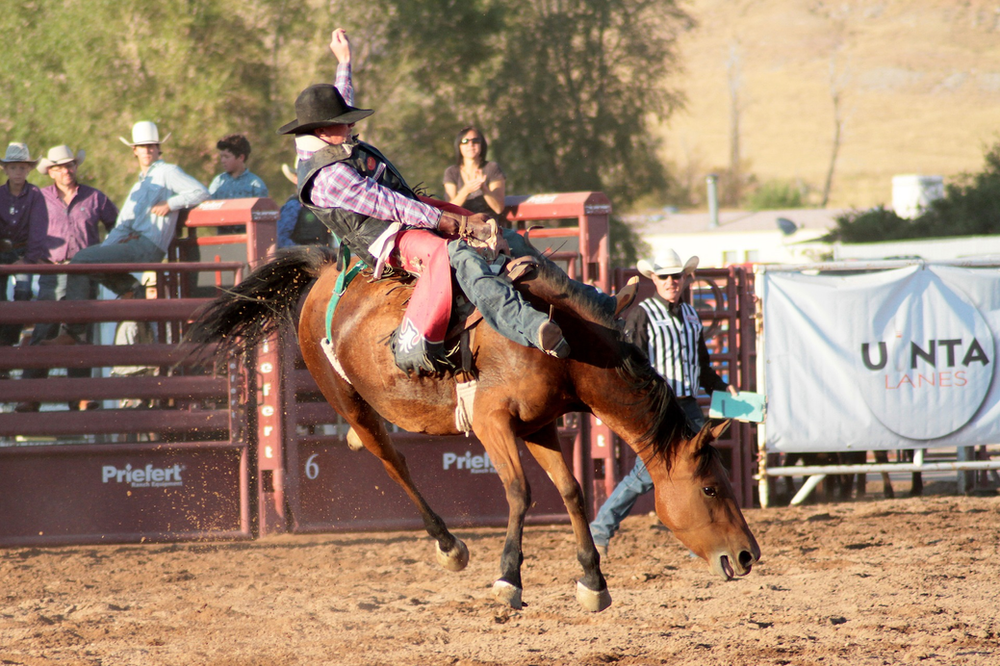
Final Thoughts On A Denver To Yellowstone National Park Road Trip
A Denver to Yellowstone National Park road trip truly takes you through one of the most incredible yet overlooked states in America. As if your start and end locations weren’t impressive enough, the sheer quality and quantity of attractions you will encounter along the way will compete with anywhere else in the country.
If you have found this article helpful, we also have one dedicated to helping you plan your visit to Yellowstone National Park once you arrive, as well as another covering all of Wyoming, in case you want to take a slightly different route back and expand your journey even further.
All you have left now is to decide what to take with you, and then you can start getting everything budgeted for and booked, so you can look forward to enjoying it all for yourself as soon as possible.
